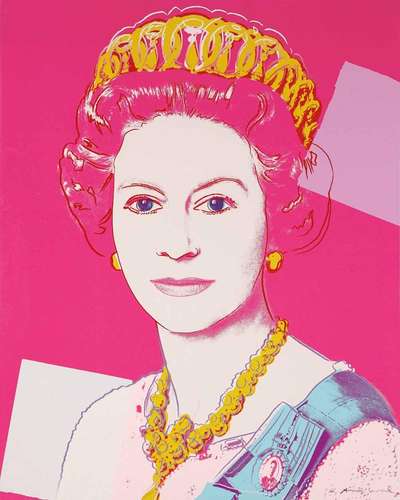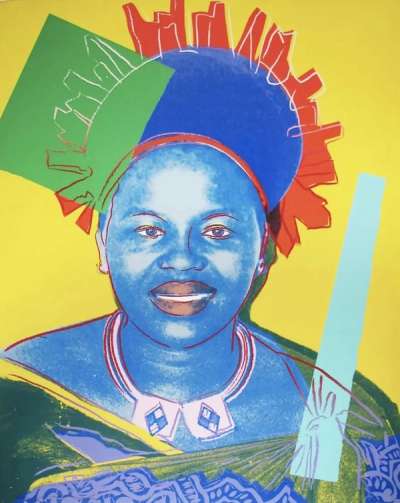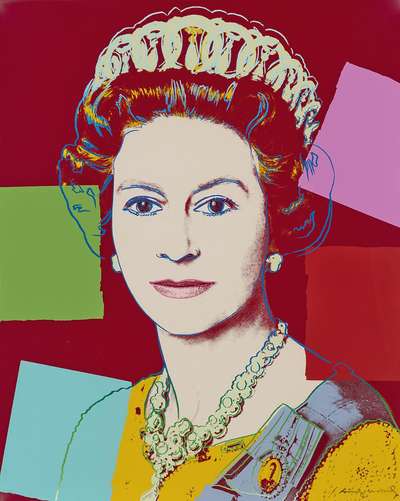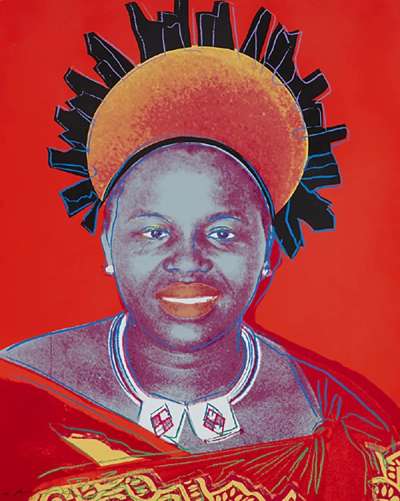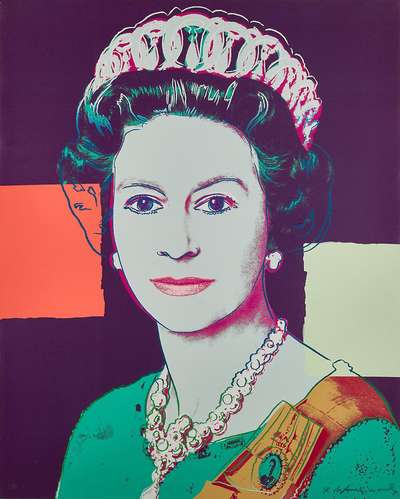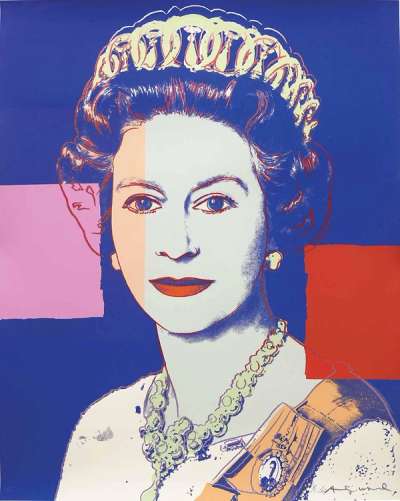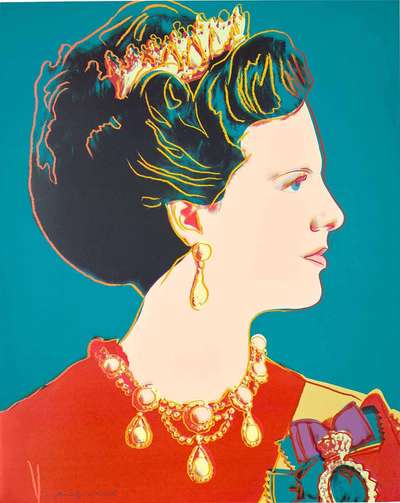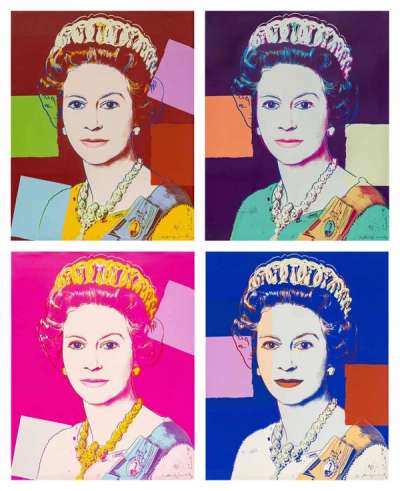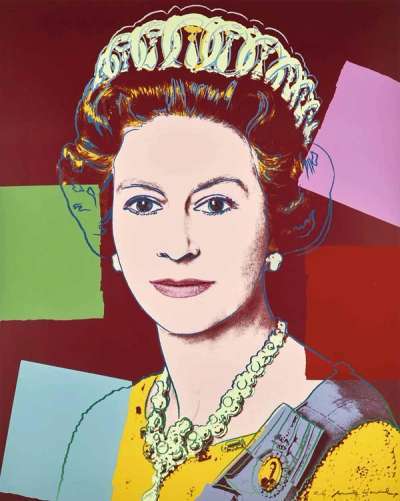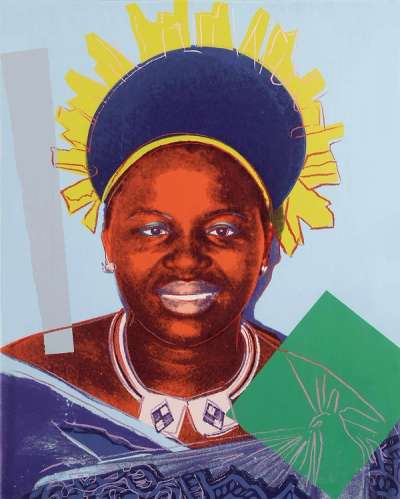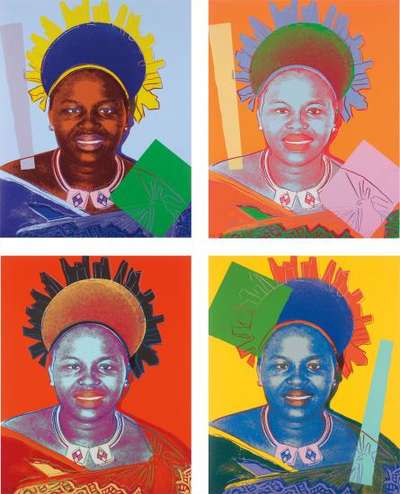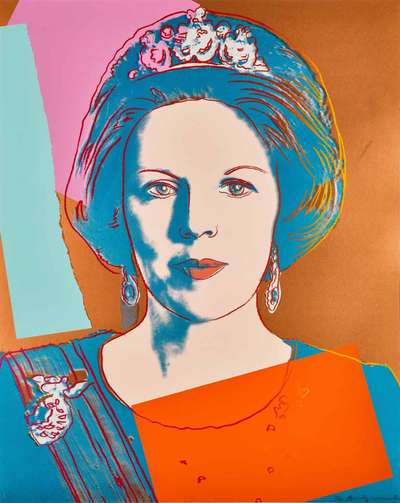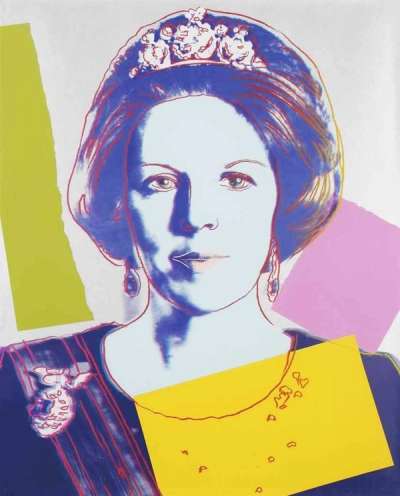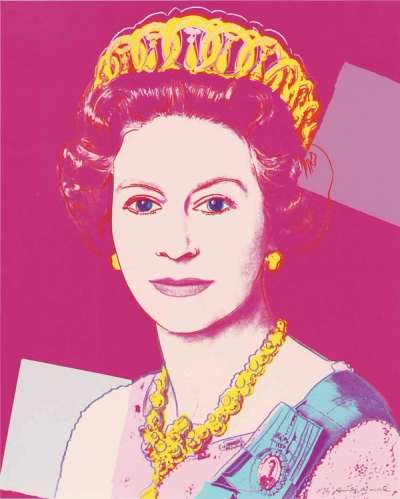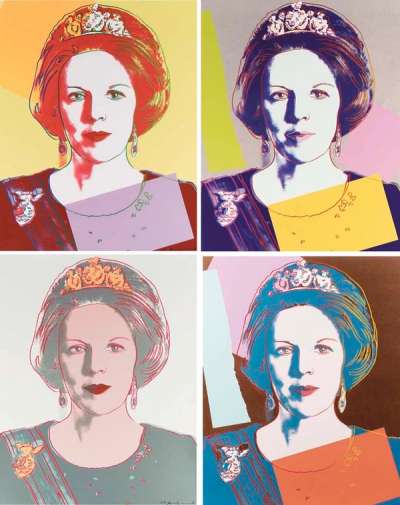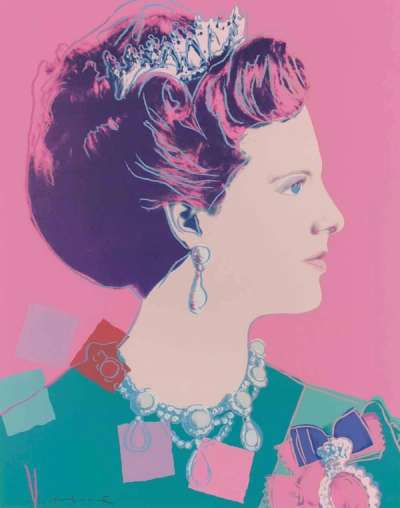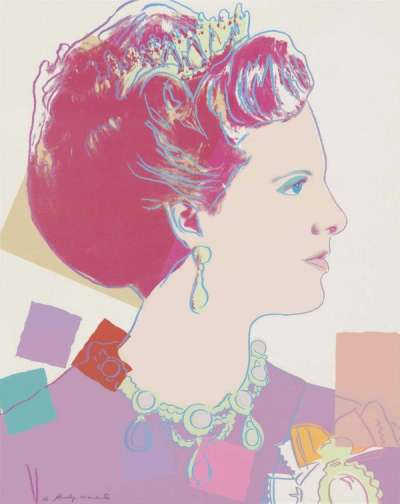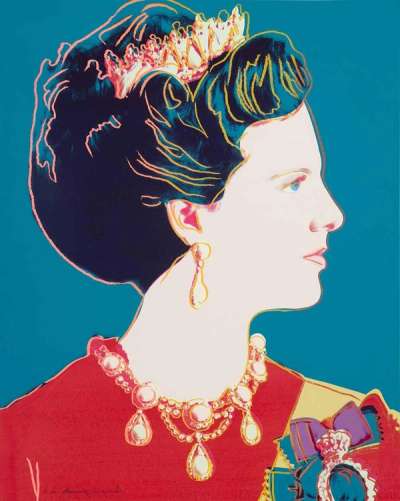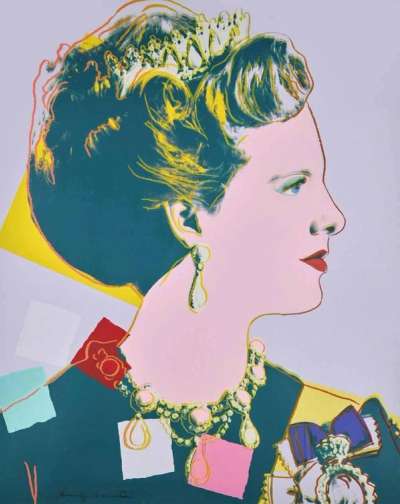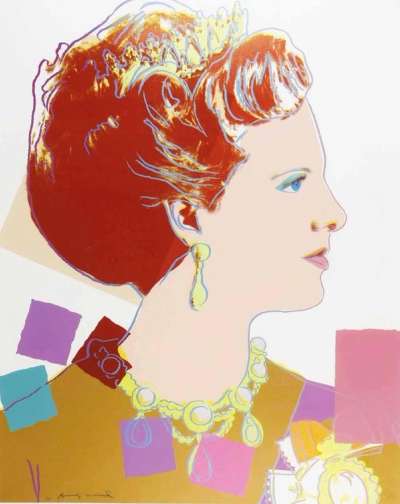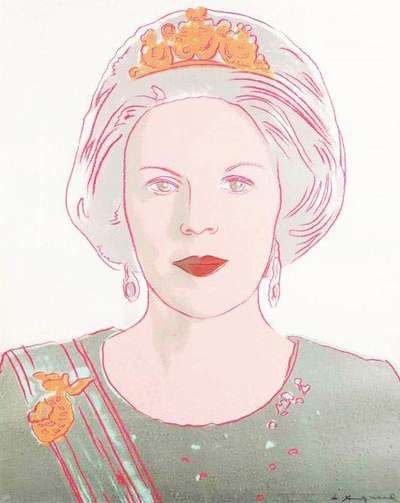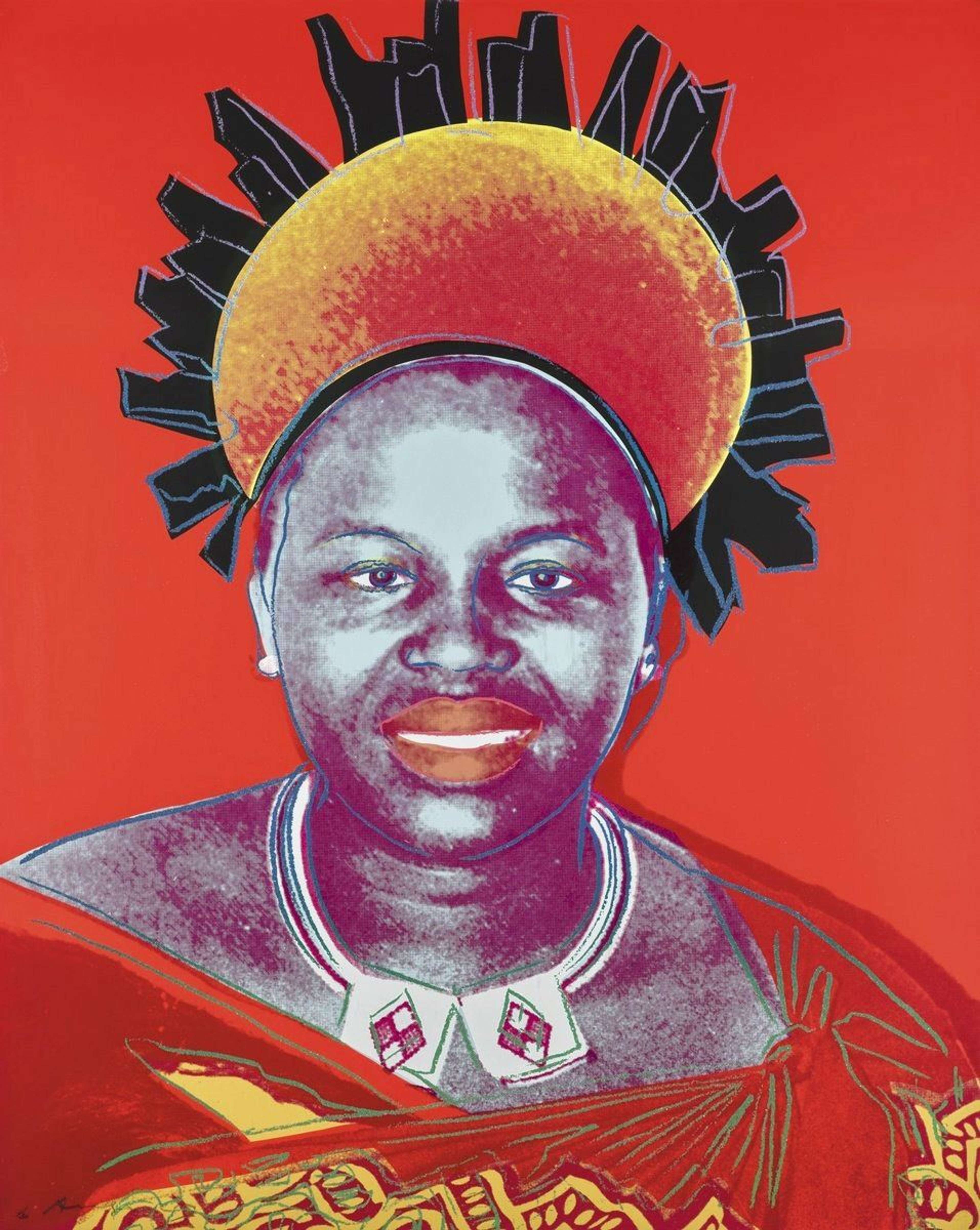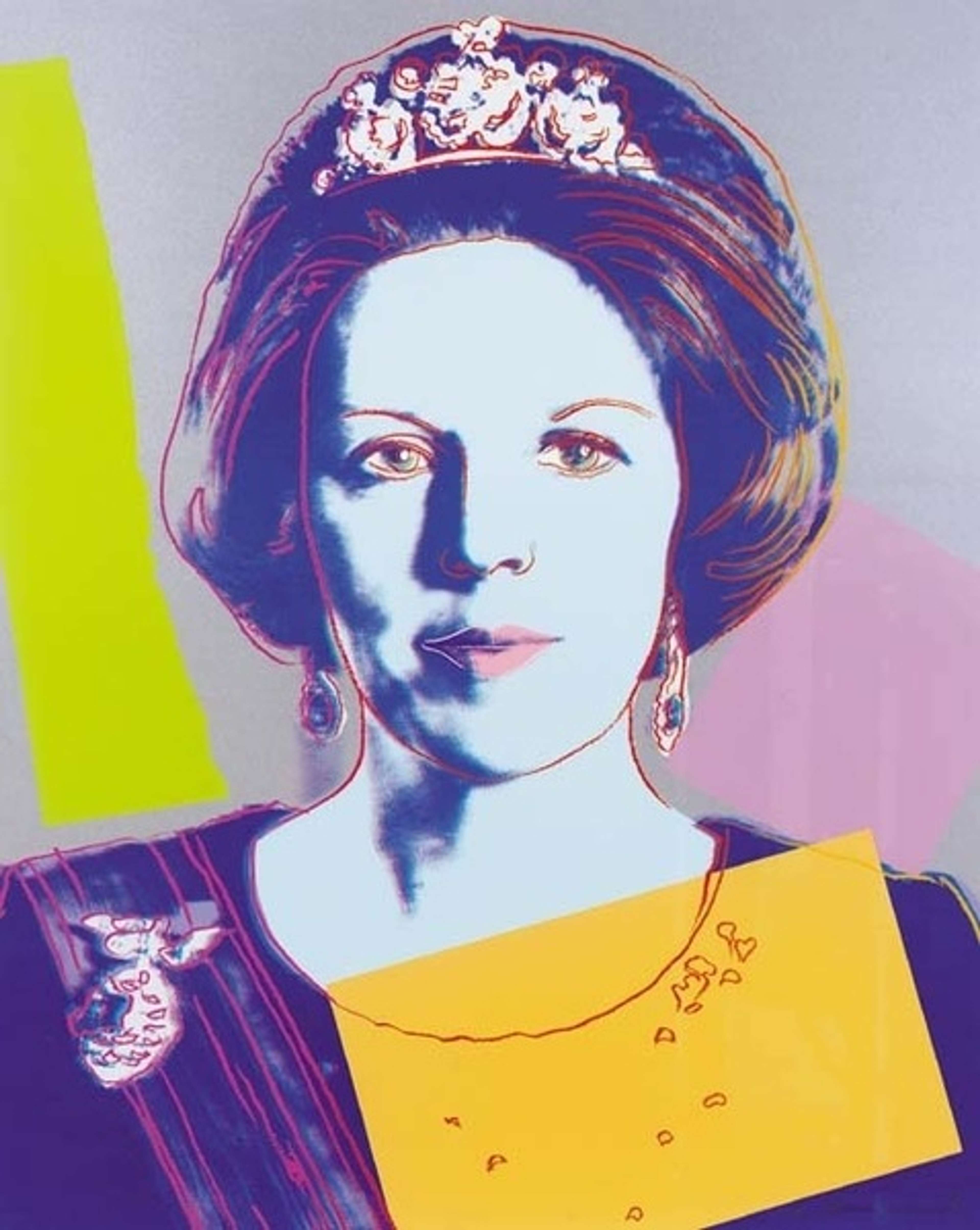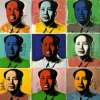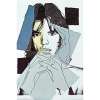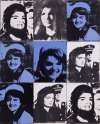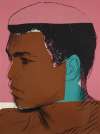Reigning
Queens
On top of his predilection for female famous faces, Andy Warhol was fascinated by monarchy; he even claimed he wanted to be “as famous as the Queen of England”. In his 1985 Reigning Queens series, Warhol pays homage to the queens of four nations, each in four poppy colourways.
Andy Warhol Reigning Queens For sale
Reigning Queens Value (5 Years)
Works from the Reigning Queens series by Andy Warhol have a strong market value presence, with 229 auction appearances. Top performing works have achieved standout auction results, with peak hammer prices of £1081752. Over the past 12 months, average values across the series have ranged from £9660 to £147785. The series shows an average annual growth rate of 2.56%.
Reigning Queens Market value
Auction Results
Sell Your Art
with Us
with Us
Join Our Network of Collectors. Buy, Sell and Track Demand
Meaning & Analysis
In his Reigning Queens series from 1985, Warhol demonstrates his enduring fascination with royalty as well as iconic female faces. From the instantly recognisable Queen Elizabeth II to the lesser known Queen Ntombi Twala of Swaziland, Queen Margrethe II of Denmark and Queen Beatrix of the Netherlands the works are a celebration of regal allure. Each would have been reigning at the time Warhol made the prints, in 1985, and a few still are. Produced in sets of four vibrant screen prints for each queen and number 16 in total, the works take traditional state portraits of the monarchs and subvert them into instantly recognisable examples of Pop Art.
Beginning with his first reproduction of Marilyn Monroe’s famous visage in 1963, Warhol had been making screen print portraits of famous women – and men – for over two decades, using the medium of screen printing to produce and reproduce his images in large editions. Here we see him put this method of reproduction to use in representing regal figures who previously would have seen their faces repeated over and over on stamps, currency and in the media. With this portfolio Warhol seems to be commenting on the way that fame can make a face into a commodity to be reproduced at will in order to become a potent symbol of power as well as a product.
Warhol’s act of appropriation in the Reigning Queens series is not straightforward. In prints such as Queen Margrethe he added blocks of colour that appear to have been collaged onto the image while details such as jewellery and facial features are emphasised with a line of coloured pencil or crayon. In one particular example, Queen Margrethe’s striking profile is further highlighted by the contrasting pink background that clashes pleasingly with her green dress. Similarly in the first print from the series, Queen Elizabeth is given a Warholian makeover with added red lips and an electric blue rinse surrounding a blank mask-like face.
In combining bright commercial colours with royal icons the works seem to be both a homage and a satire of kitsch aesthetics. The monarchs, frozen in time and colour, are now on equal footing with the models, actresses and Renaissance muses that form Warhol’s oeuvre. Showing his mastery of screen printing as a medium, Warhol transforms these women into Pop Art icons through his daring use of colour blocking and elegant draughtsmanship learned as a fashion illustrator at the beginning of his career.
Warhol famously once claimed that he wanted to be “as famous as the Queen of England” and with this series it is easy to see how he might have achieved that ambition. Today his name is synonymous with the screen print as a ‘high art’ medium where once it was only known in commercial printing. He is widely celebrated as the ‘king of Pop Art’ achieving if not quite royalty status at least enough acclaim to have influenced and inspired thousands.
